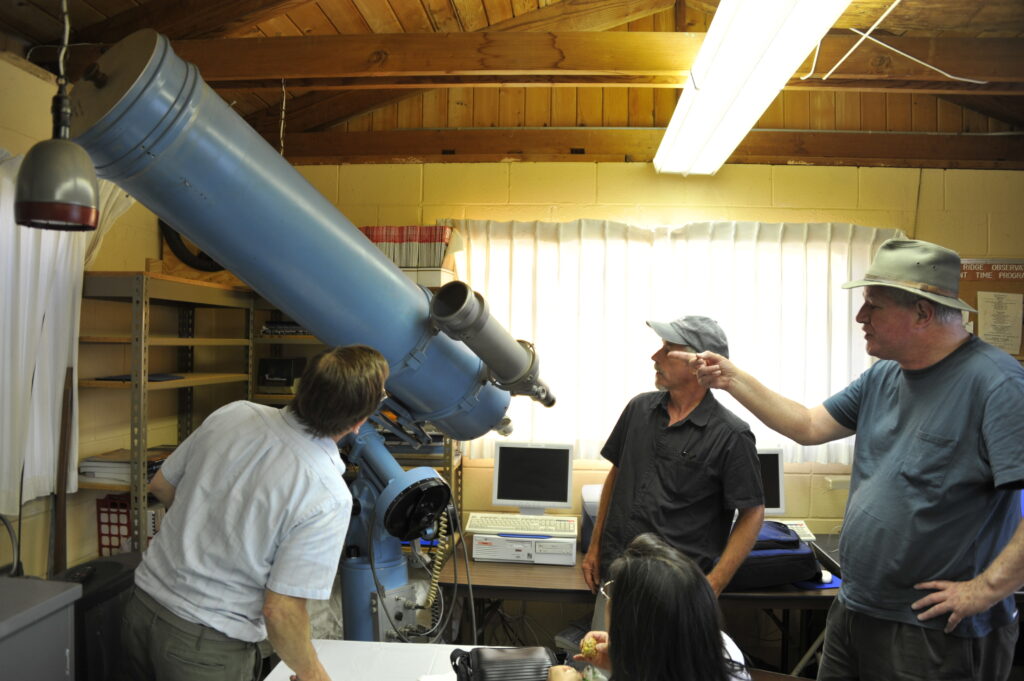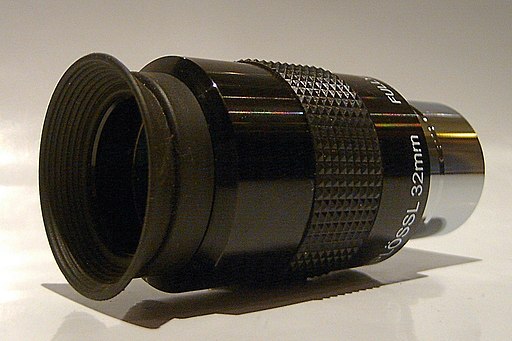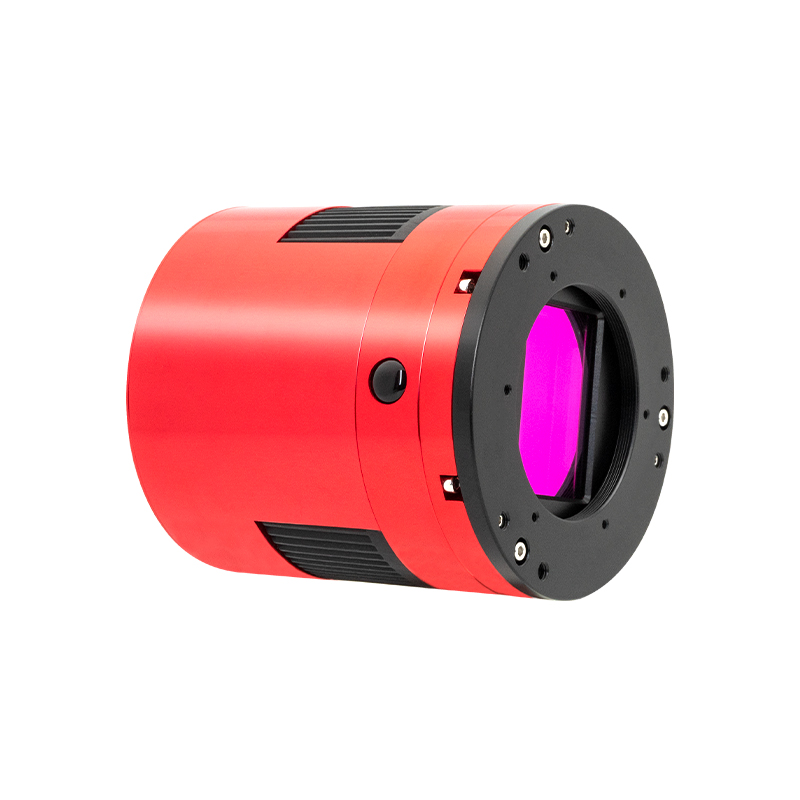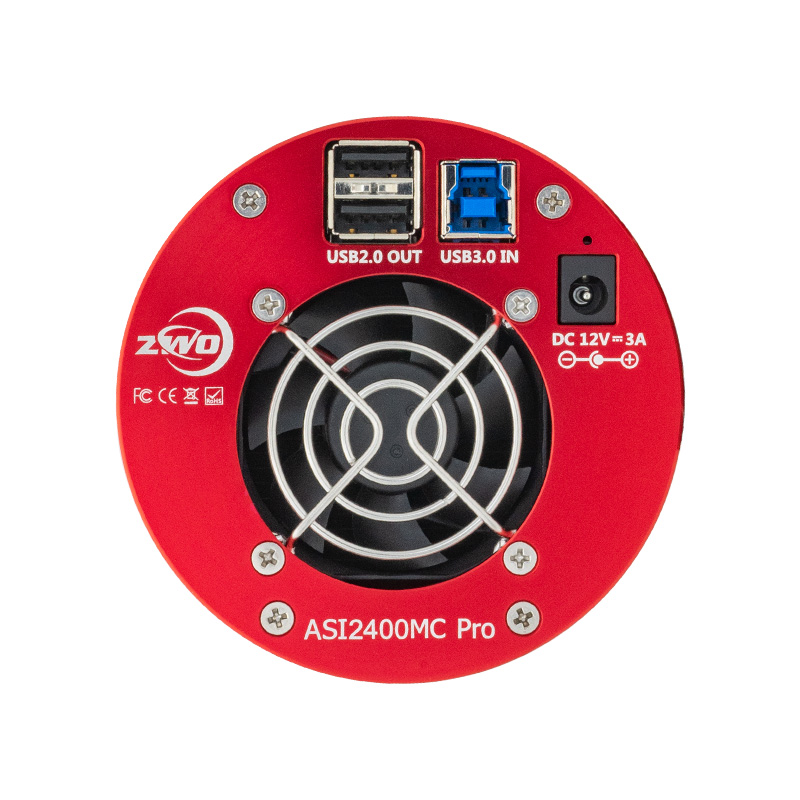Equipment
Optics
Telescopes in a Variety of Configurations


12-inch Cassegrain: an estate gift from the family of telescope maker and Founding Member John Terlep.
Eyepieces for Visual Observation

Oculars - Putting Stars in Your Eyes!
The fundamental role of the ocular (eyepiece) is to magnify the image formed by the primary mirror or lens. How it does that leads to a dizzying multitude of designs and their variations, each with particular strengths and weaknesses concerning field of view, image quality, economics, and general suitability for viewing a particular object. And that's just the starting point... Spirited discussions among amateur astronomers endlessly debate the merits and limitations within the
multitude of incarnations past and present.
Costs for a premium eyepiece can be staggering - several hundred dollars - due to the complexity of the lens grouping(s) and the exotic characteristics of the glass itself. The "next level" performance of these high-end oculars allows the (astronomical!) sums that producers are able to charge. They provide a viewing experience that would have been unimaginable before breakthroughs in design, enhanced by computerized ray-tracing and the efficiencies in mass production and quality control made possible by modern optical manufacturing processes.
This reasonably-priced ocular has a focal length of 32mm and is of a configuration first formulated by Austrian optician Simon Plössl in 1860. It performs well for a variety of purposes and is an upgrade to the much cheaper alternatives usually bundled with inexpensive, "department store" telescopes.
The cost-cutting, tag-team duo of poor eyepieces and a wobbly mount should be on trial for malfeasance, they in addition to marketers fanning the flames of hype, particularly with regard to magnification. Collectively they have incinerated the hopes of countless legions of enthused but unsuspecting purchasers of such "bad goods."

Oculars - Putting Stars in Your Eyes!
The fundamental role of the ocular (eyepiece) is to magnify the image formed by the primary mirror or lens. How it does that leads to a dizzying multitude of designs and their variations, each with particular strengths and weaknesses concerning field of view, image quality, and general suitability for viewing a particular object. And that's just the starting point... Spirited discussions among amateur astronomers endlessly debate the merits and limitations within the
multitude of incarnations past and present.
Costs for a premium eyepiece can be staggering - several hundred dollars - due to the complexity of the lens grouping(s) and the exotic characteristics of the glass itself. The "next level" performance of these high-end oculars allows the (astronomical!) sums that manufacturers are able to charge. They provide a viewing experience that would have been unimaginable before breakthroughs in optical design enhanced by computerized ray-tracing and the efficiencies in production necessary for fabrication in quantity and with the requisite quality control.
This reasonably-priced ocular has a focal length of 32mm and is of a configuration first formulated by Austrian optician Simon Plössl in 1860. It performs well for a variety of purposes and is an upgrade to the much cheaper alternatives usually bundled with inexpensive, mass-produced telescopes.
The cost-cutting, tag-team duo of poor eyepieces and a wobbly mount should be on trial for malfeasance, they in addition to marketers fanning the flames of hype, particularly with regard to magnification. Collectively they have incinerated the hopes of countless legions of enthused but unsuspecting purchasers of such "bad goods."
Fotografeur,
CC BY-SA 3.0,
via Wikimedia Commons
For the 30-inch and 6-inch telescopes, a variety of oculars are available. The focuser for the Carroll telescope accepts eyepieces of 2-inch diameter or 1.25 with an adapter. The six-inch guide telescope only uses 1.25-inch models.
The magnification of any eyepiece will be greater for the Carroll telescope’s Cassegrain setup versus the Newtonian focus due to the longer focal length at f/25 vs f/6, respectively. When looking through the telescope, increasing magnification helps to darken the sky background which can be advantageous for its own sake, but misapplied magnification creates issues that are more easily avoided once the the budding astronomer understands the fundamentals.
Magnification:
Math,
Myth?,
or Misunderstanding?!
Math
The magnification (M) provided by an eyepiece depends upon two factors:
- the focal length (FL) of the objective (main lens or mirror)
- the FL of the eyepiece itself
The formula is simple:
M = FL of the objective / FL of the eyepiece.
Q. If an eyepiece has a FL = 32mm, what “power” will result when used with the Carroll reflector in its Newtonian (f/6) configuration?
A. The FL of the telescope is its diameter (30″ / .76m) multiplied by the focal ratio (f/6): 760mm * 6 = 4560mm. Thus, the eyepiece will yield a magnification of 4560/32 or “143x” in the commonly used notation.
Myth?
A telescope is promised to provide very high magnification (say, 400x or “400 power”). Should you believe such a claim??
Probably. After all, the math is pretty trivial! But whether or not that magnification is useful is quite another matter…
Misunderstanding?!
Visual observing is usually best at relatively “low” power, something under 100. At most (i.e., under very good atmospheric conditions), you can only expect to use about 40x per inch of aperture for telescopes much smaller than the Carroll reflector, and nowhere close to that ratio for the 30-inch itself!
Surprised?? Consider this…
First, magnification amplifies everything: any “shakiness” in the mount, the speed at which an object appears to move through the field of view, any problems inherent in the optics and, of equally paramount impact, the blurring effects of a roiling, turbulent air mass.
While a well-constructed, properly aligned and motorized mount handles the mechanical issues and assuming the optics were well made and in proper alignment, there is no getting around a temperamental atmosphere – unless, perhaps, you mask off some of the telescope’s aperture. (By reducing the cross-section of the column of air you are looking through, you might minimize your exposure to image degrading eddies.)
The other issue to be aware of is that increasing magnification reduces the “density” of light, spreading thinner and thinner the fixed amount of illumination gathered by the telescope. It’s somewhat like inviting your friends over to eat a pizza (a single pie of a certain size!) – the more people you host, the less pizza each of your guests will get.
CMOS Camera
ZWO ASI 2400-MC Pro
The primary camera in use at SRO is a full-frame, Peltier (heat transfer) – cooled color camera with a CMOS sensor. It was made by ZWO, a leading supplier of planetary and deep-sky imagers. The cooling feature is especially useful for reducing noise during long exposures and for easily preparing “dark” frames – necessary components for proper calibration of telescopic astrophotography images made with such digital cameras.
Since accurate “darks” need to be exposed at the same camera settings and ambient conditions as the “lights,” this becomes challenging without the temperature control provided by the camera. Before “cooling” was available, the darks were taken immediately after the lights because it was assumed that the ambient temperature hadn’t changed appreciably. But this consumed precious nighttime under the stars. With a cooled camera, the darks can be taken anytime – even the day – so long as the camera is set to the same exposure conditions as the lights, and no light is allowed to strike the sensor.
For more technical information, the manufacturer’s product page for the 2400MC-Pro is found here.




Software
Mount Control
The primary mount control interface is achieved through hardware and software (a version of TheSky) furnished through Colorado-based Software Bisque. Included in the full-featured package is a modeling routine which can improve pointing accuracy. It does so by taking a series of user-controlled star sightings, ideally over many parts of the sky, and measuring the difference between the expected position of the star and its actual position as reported by the shaft encoders on each axis of the mount.
By building a database of Azimuth and Altitude corrections, the software can apply the interpolations and negate much of the error arising from sagging forces, mechanical irregularities of manufacture, and polar mis-alignment.
Imaging Support
While the mount control software can also be used for imaging, other, higher level programs can alternatively perform this function, often with less complication. N.I.N.A. (Nighttime Imaging ‘N Astronomy) is one such example. Such software not only controls the camera, but optionally a filter wheel, electric focuser and guiding software (e.g., PHD2 “Push Here Dummy” version 2) these in addition to sending basic “go-to” and plate-solved “centering” commands through the lower-level mount controller.







